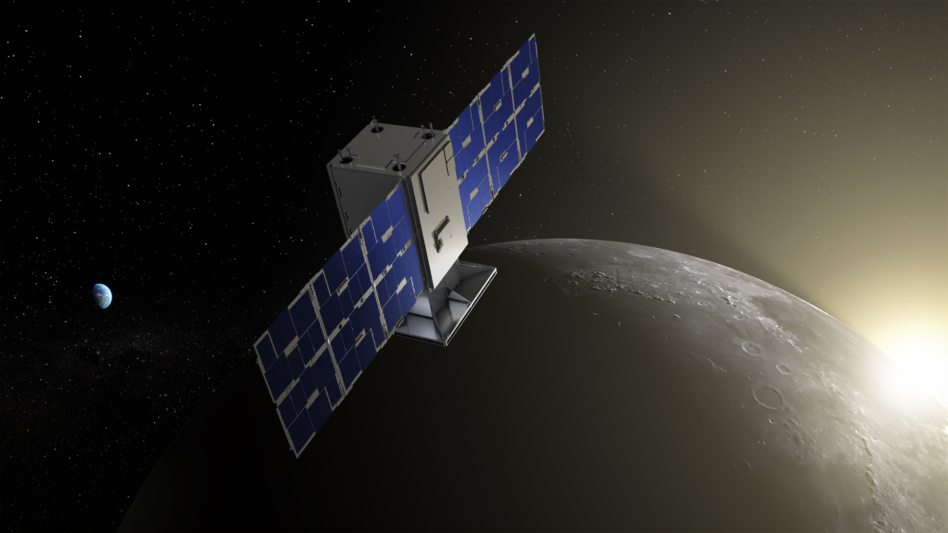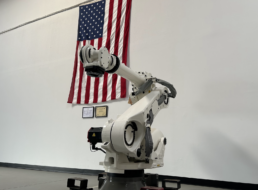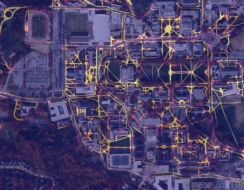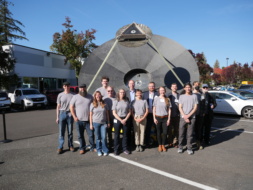On Monday, NASA and Rocket Lab are set to launch a pathfinding mission that will probe out a peculiar orbit around the moon that could be used for the Gateway lunar station in a few more years.
CAPSTONE, as the mission is known, stands for Cislunar Autonomous Positioning System Technology Operations and Navigation Experiment. The CAPSTONE mission will follow a ballistic trajectory that NASA’s team has identified as a sort of gravitational path of least resistance, allowing the craft to get to lunar orbit without expending tons of energy.
“Previously, when we’ve gone to the moon, we’ve spent a lot of energy to get there and then get into a circular orbit,” Jason Kessler, the SBIR and STTR program executive at NASA, told Payload.
- SBIR = Small Business Innovation Research
- STTR = Small Business Technology Transfer
“Because the orbital dynamics make it expensive, or it takes a lot of energy to do that, the brilliant folks at NASA came up with this gateway approach that looks like an ellipse, a large halo around the moon,” Kessler said.
The craft: The CAPSTONE craft consists of a key instrument, the Cislunar Autonomous Positioning System (the CAPS of CAPSTONE), developed by Advanced Systems. The core tech is integrated onto a satellite bus with components coming from a handful of other small businesses working with NASA.
Strictly speaking, the CAPSTONE mission isn’t a critical step on the path to launching the Gateway lunar station. NASA scientists are confident, based on their modeling, that the orbit will work fine. Instead, “getting a spacecraft to go out and fly this orbit is super helpful in terms of planning, because it helps them get real data,” said Kessler. “You don’t have to rely on the models.”
Enter SBIR
NASA uses SBIR and STTR contracts to help space companies develop technology that will be both useful to NASA and commercially viable down the line.
“There are plenty of folks within the agency that see and utilize the SBIR and STTR programs as an efficient way of pushing the state of the art of technology,” said Kessler. “So there are plenty of folks that use the program as a means to find solutions to their technical challenges.”
Phase 1 of a NASA SBIR contract awards $150,000 for six months of technology development, and currently awards $750,000 for two years at Phase 2 (that number will increase to $850,000 for the next cycle of contracts). Phase 2 contract recipients work much more closely with NASA on development. Then, at Phase 3, NASA awards firm fixed-price contracts to procure those technologies to further its missions.
Back to CAPSTONE…Five small businesses—or what were considered small businesses for the purposes of contracting via SBIR—contributed vital components to the CAPSTONE mission:
- Advanced Space built the CAPS instrument
- Stellar Exploration provided propulsion
- Tyvak Nano-Satellite Systems built the cubesat
- Tethers Unlimited contributed the radio comms system
- Rocket Lab will launch the mission
Each of the companies contributing components to CAPSTONE has worked with NASA through a number of SBIR contracts over the years. Advanced Systems received its first NASA SBIR award in 2015 and has since received 18 SBIR/STTR contracts. Tethers United, the radio systems developer, has worked with NASA since 1992 and has received nearly 50 SBIR/STTR contracts.
“The community of small spacecraft technology development at NASA has been very thoughtful and active in engaging small businesses around technology de-risking, or developing areas that would be beneficial to missions,” said Kessler. “Because that has happened over time, there’s then this critical mass that was able to come together to deliver on actually pulling off this kind of mission.”




